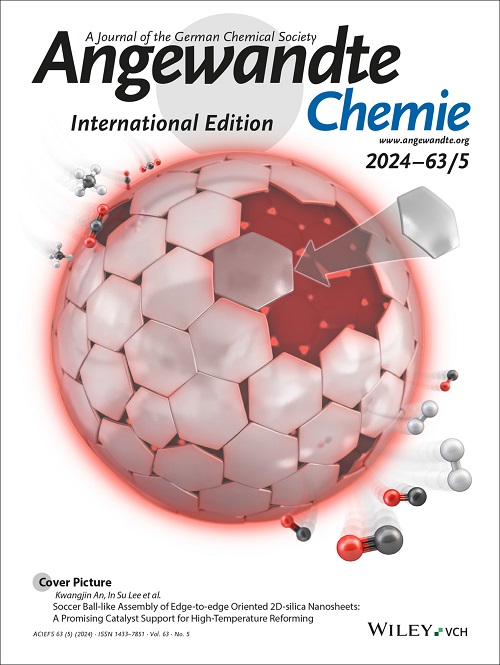Supramolecular Gels as Active Tools for Reaction Engineering
IF 16.1
1区 化学
Q1 CHEMISTRY, MULTIDISCIPLINARY
引用次数: 0
Abstract
Supramolecular gels assembled from low-molecular-weight gelators (LMWGs) are fascinating soft materials for use in synthesis, combining aspects of hetero- and homogeneous systems. The unique combination of environments within a gel offers the ability to control reactivity in new ways. For example, self-assembly into a gel network can modify the reactivity of catalytic sites on the LMWG. Controlling the assembly of multiple LMWGs can result in integrated gels with orthogonal activities that could not normally co-exist. Enzymes encapsulated within self-assembled gels can exhibit superactivity, extending their use into solvent media more appropriate for organic synthesis. Highly reactive species, such as ligand-free nanoparticles or moisture/air-sensitive organometallics can be protected within the unique environment of a supramolecular gel, facilitating their use in ambient conditions, potentially opening up the use of such species to non-specialist researchers. Beyond fundamental chemistry, performing reactions in gels leads to the emerging concept of gels as ‘nanoreactors’. Smart chemical engineering methods are enabling the fabrication of materials and devices for use in a variety of synthetic workflows, potentially transforming the way synthesis is done. In summary, this review provides an overview of key concepts and signposts the way towards future developments of gels as active tools for reaction engineering.由低分子量凝胶剂(LMWGs)组装而成的超分子凝胶是用于合成的迷人软材料,它结合了异质和均质系统的各个方面。凝胶内部环境的独特组合提供了以新方式控制反应性的能力。例如,自组装成凝胶网络可以改变 LMWG 上催化位点的反应性。控制多个低分子量凝胶的组装可以产生具有正交活性的集成凝胶,而这种活性通常是无法共存的。封装在自组装凝胶中的酶可以表现出超强活性,从而将其应用扩展到更适合有机合成的溶剂介质中。不含配体的纳米粒子或对湿气/空气敏感的有机金属等高活性物质可以在超分子凝胶的独特环境中得到保护,从而便于在环境条件下使用,并有可能向非专业研究人员开放此类物质的使用。除了基础化学之外,在凝胶中进行反应还产生了凝胶作为 "纳米反应器 "的新兴概念。智能化学工程方法能够制造出用于各种合成流程的材料和装置,从而有可能改变合成的方式。总之,本综述概述了关键概念,并指明了凝胶作为反应工程活性工具的未来发展方向。
本文章由计算机程序翻译,如有差异,请以英文原文为准。
求助全文
约1分钟内获得全文
求助全文
来源期刊
CiteScore
26.60
自引率
6.60%
发文量
3549
审稿时长
1.5 months
期刊介绍:
Angewandte Chemie, a journal of the German Chemical Society (GDCh), maintains a leading position among scholarly journals in general chemistry with an impressive Impact Factor of 16.6 (2022 Journal Citation Reports, Clarivate, 2023). Published weekly in a reader-friendly format, it features new articles almost every day. Established in 1887, Angewandte Chemie is a prominent chemistry journal, offering a dynamic blend of Review-type articles, Highlights, Communications, and Research Articles on a weekly basis, making it unique in the field.

 求助内容:
求助内容: 应助结果提醒方式:
应助结果提醒方式:


